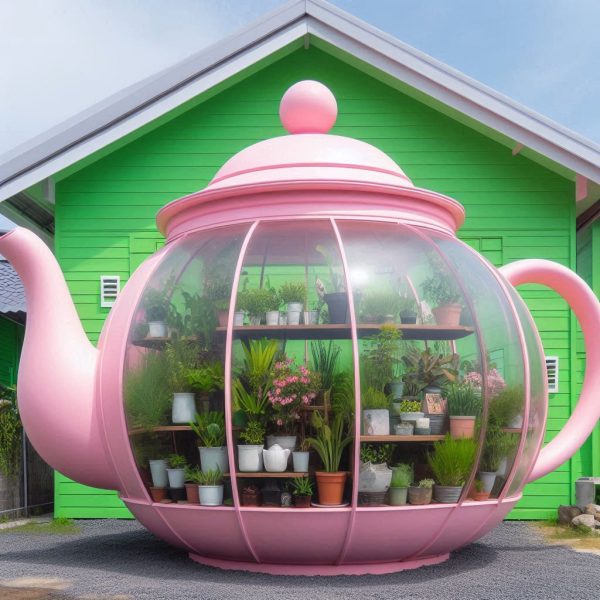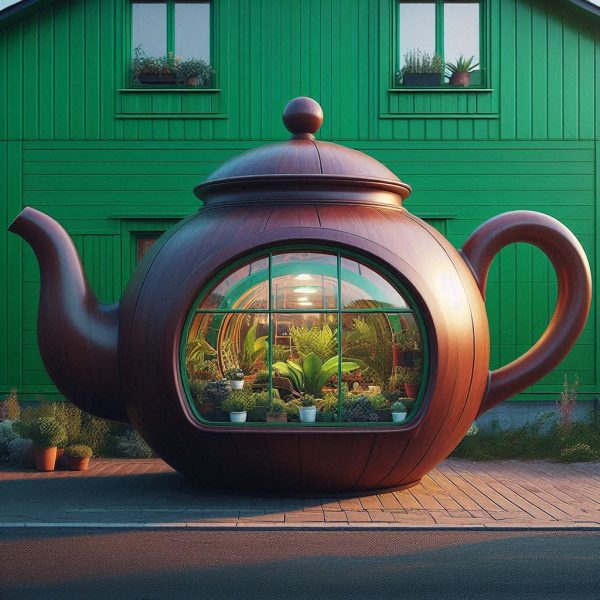In the world of gardening, innovation and creativity know no bounds. Gardeners and designers constantly seek new ways to enhance their outdoor spaces, and one of the latest trends capturing hearts is the teapot-shaped greenhouse. Combining whimsy and practicality, these structures are not only visually appealing but also offer an ideal environment for growing plants. This article will delve into the charm, benefits, and practical aspects of teapot-shaped greenhouses, providing a comprehensive guide for anyone looking to incorporate this delightful structure into their garden.
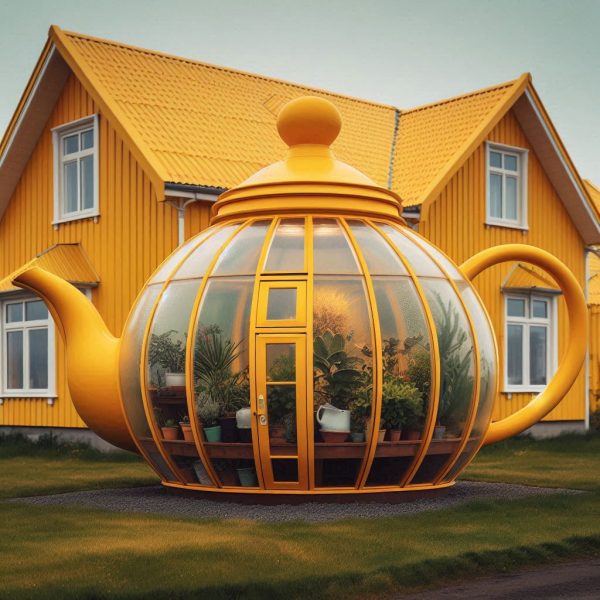
Contents
- 1 The Ultimate Guide to Choosing the Right Teapot-Shaped Greenhouse
- 2 Top Trends in Teapot-Shaped Greenhouses: What’s Hot and What’s Not
- 3 Creating a Stylish Outdoor Oasis: How Teapot-Shaped Greenhouses Elevate Your Space
- 4 How to Care for Your Teapot-Shaped Greenhouse: Tips for Maintenance and Longevity
- 5 Innovative Designs: The Latest in Teapot-Shaped Greenhouse Technology
- 6 Accessorizing with Teapot-Shaped Greenhouses: Enhance Your Garden Décor
- 7 From Concept to Reality: The Evolution of Teapot-Shaped Greenhouses
- 8 Finding the Perfect Teapot-Shaped Greenhouse: Matching Your Style and Needs
- 9 Exploring Different Materials for Teapot-Shaped Greenhouses: Which One is Right for You?
- 10 Maximizing Comfort and Convenience: Features to Look for in Teapot-Shaped Greenhouses
- 11 Sustainable and Eco-Friendly Teapot-Shaped Greenhouses: A Green Thumb’s Dream
- 12 Conclusion
The Ultimate Guide to Choosing the Right Teapot-Shaped Greenhouse
Understanding Teapot-Shaped Greenhouses
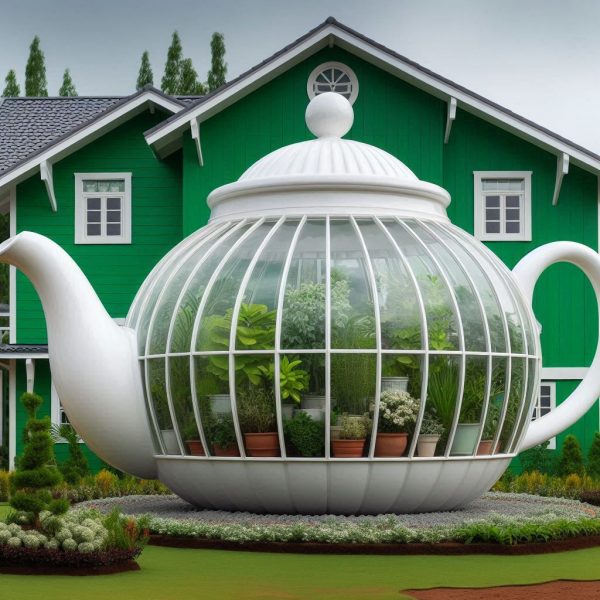
Teapot-shaped greenhouses are exactly what they sound like – greenhouses designed in the shape of a teapot. These unique structures stand out due to their distinctive design, which adds a touch of whimsy to any garden. Beyond aesthetics, teapot-shaped greenhouses are functional, providing a controlled environment for a variety of plants.
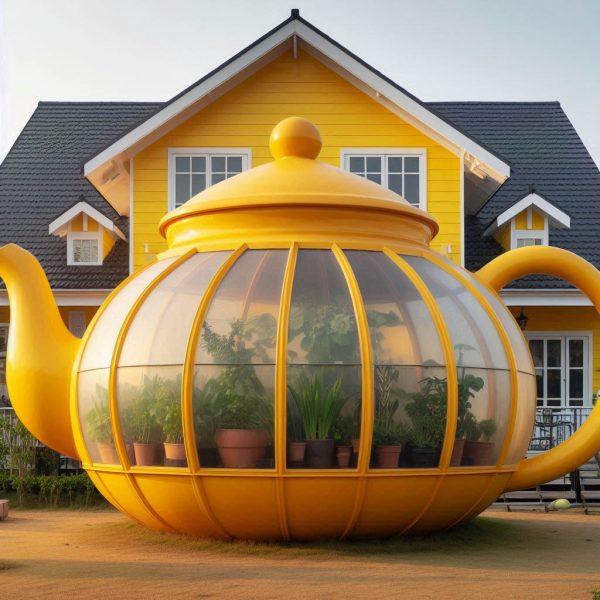
Factors to Consider When Choosing a Teapot-Shaped Greenhouse
- Size and Dimensions: Ensure the greenhouse fits well within your garden space. Consider the height, width, and length to accommodate your gardening needs.
- Material and Durability: Look for materials that offer longevity and durability, such as tempered glass, polycarbonate panels, or high-quality PVC.
- Ventilation and Climate Control: Proper ventilation and climate control are essential for plant health. Check for features like adjustable vents, fans, and heating systems.
- Ease of Assembly: Some greenhouses come as DIY kits, while others may require professional assembly. Choose according to your skill level and budget.
- Aesthetic Appeal: Ensure the design complements your garden and overall aesthetic preferences.
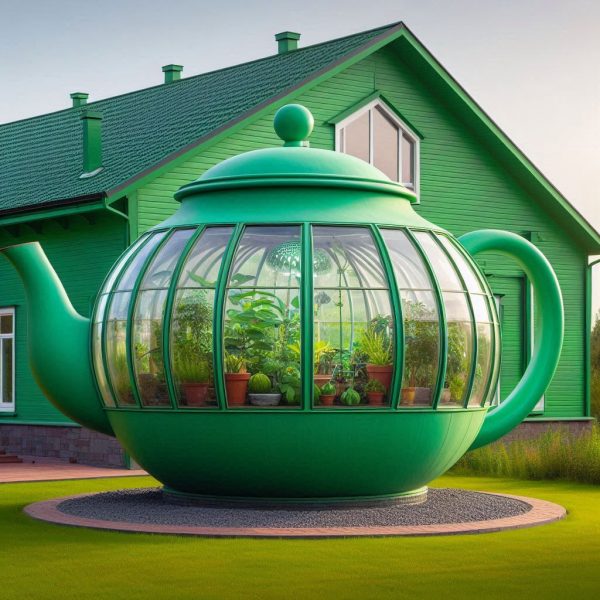
Top Trends in Teapot-Shaped Greenhouses: What’s Hot and What’s Not
Current Trends in Teapot-Shaped Greenhouses
- Eco-Friendly Materials: Many gardeners are opting for greenhouses made from sustainable and eco-friendly materials.
- Smart Technology Integration: Features like automated watering systems, climate control apps, and solar-powered lights are becoming popular.
- Compact and Portable Designs: Smaller, portable teapot-shaped greenhouses are ideal for urban gardens and small spaces.
- Customized Designs: Personalized elements such as color schemes, decorative trims, and unique door designs are on the rise.
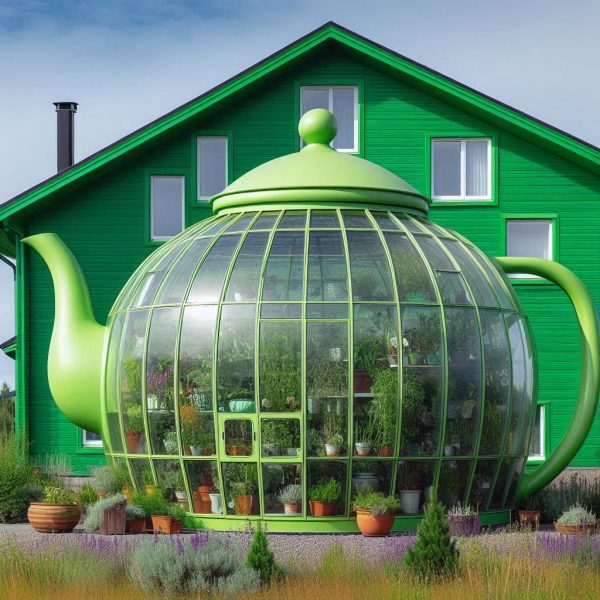
What to Avoid
- Cheap, Low-Quality Materials: These can lead to structural issues and reduced longevity.
- Overly Complicated Features: While advanced features can be appealing, overly complex systems can be difficult to maintain and repair.
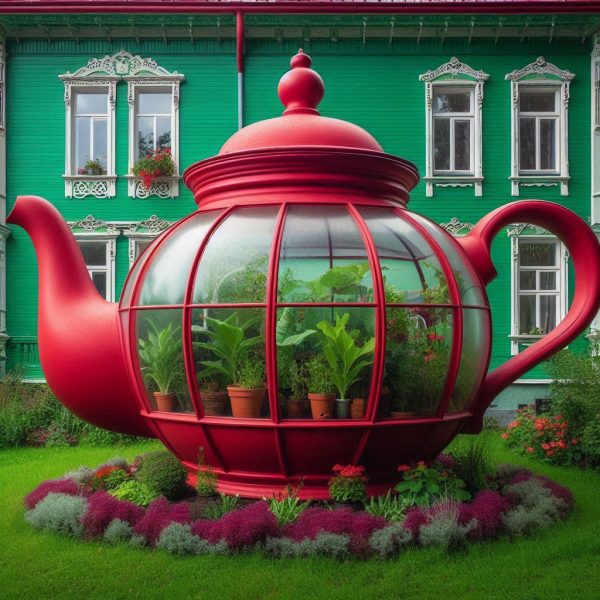
Creating a Stylish Outdoor Oasis: How Teapot-Shaped Greenhouses Elevate Your Space
The Aesthetic Appeal of Teapot-Shaped Greenhouses
Teapot-shaped greenhouses are more than just functional structures; they are works of art that can transform your garden into a charming and stylish oasis. Here’s how they can elevate your space:
- Visual Focal Point: The distinctive design makes the greenhouse a centerpiece of your garden, drawing attention and admiration.
- Whimsical Touch: The playful teapot shape adds a whimsical and enchanting element to your garden décor.
- Complementary Design: The greenhouse can be designed to complement other garden elements, such as pathways, flower beds, and outdoor furniture, creating a cohesive look.
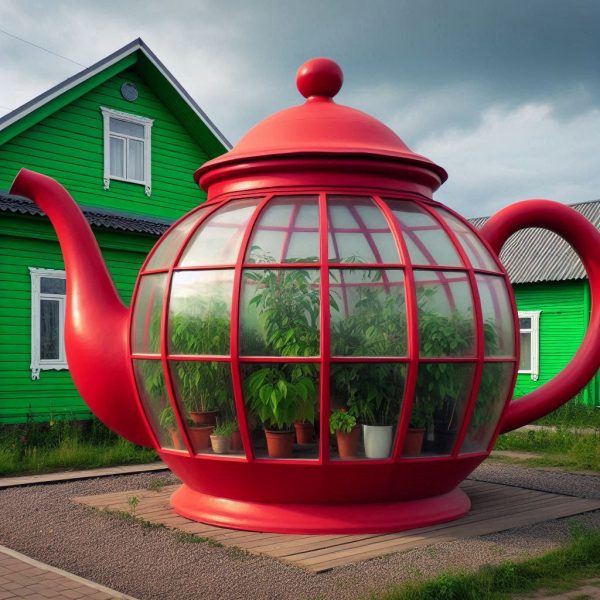
Design Tips for Incorporating Teapot-Shaped Greenhouses
- Matching Colors: Coordinate the colors of the greenhouse with the overall color scheme of your garden.
- Strategic Placement: Position the greenhouse in a location where it can be easily seen and appreciated.
- Themed Décor: Enhance the teapot theme with matching garden accessories, such as teapot-shaped planters, birdhouses, and garden gnomes.

How to Care for Your Teapot-Shaped Greenhouse: Tips for Maintenance and Longevity
Maintaining Your Teapot-Shaped Greenhouse
Proper maintenance is essential to keep your teapot-shaped greenhouse looking beautiful and functioning effectively. Here are some tips:
- Regular Cleaning: Clean the greenhouse regularly to prevent the buildup of dirt, algae, and pests. Use non-abrasive cleaners to avoid damaging the materials.
- Inspect for Damage: Regularly check for any signs of damage, such as cracks or leaks, and address any issues promptly.
- Climate Control Maintenance: Ensure that the ventilation and heating systems are working correctly. Clean and replace filters as needed.
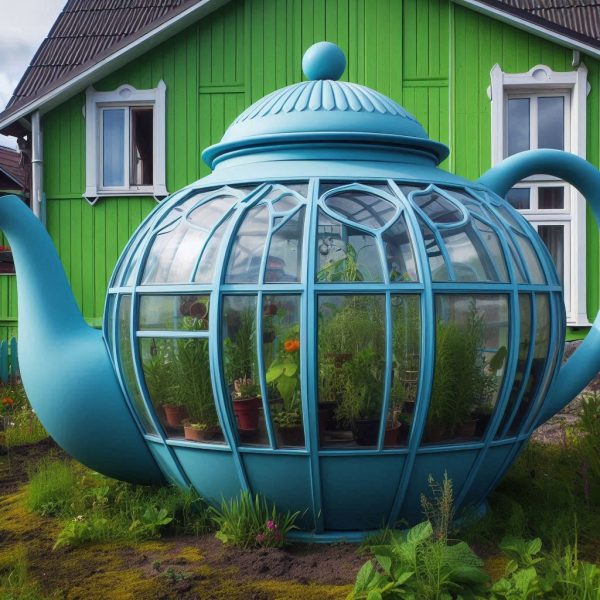
Preventing Common Issues
- Avoid Heavy Snow Load: In areas with heavy snowfall, ensure that the greenhouse is capable of bearing the weight or consider additional supports.
- Proper Watering Practices: Avoid overwatering plants to prevent mold and mildew growth.
- Pest Control: Implement pest control measures to protect your plants and the structure of the greenhouse.
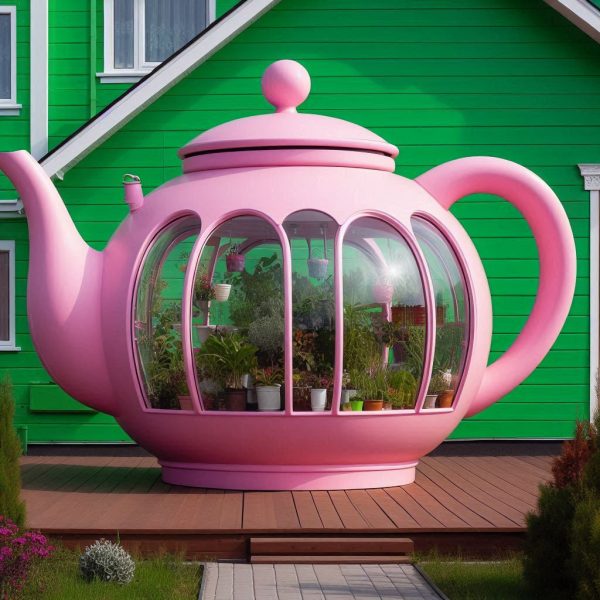
Innovative Designs: The Latest in Teapot-Shaped Greenhouse Technology
Technological Advancements
The world of teapot-shaped greenhouses has seen several innovative advancements, enhancing both functionality and aesthetic appeal:
- Smart Greenhouses: Integration of smart technology offers automated climate control, watering systems, and lighting, which can be controlled via smartphone apps.
- Energy Efficiency: Advances in insulation and solar technology make greenhouses more energy-efficient and environmentally friendly.
- Durable Materials: New materials and coatings improve durability, making greenhouses more resistant to weather conditions and pests.
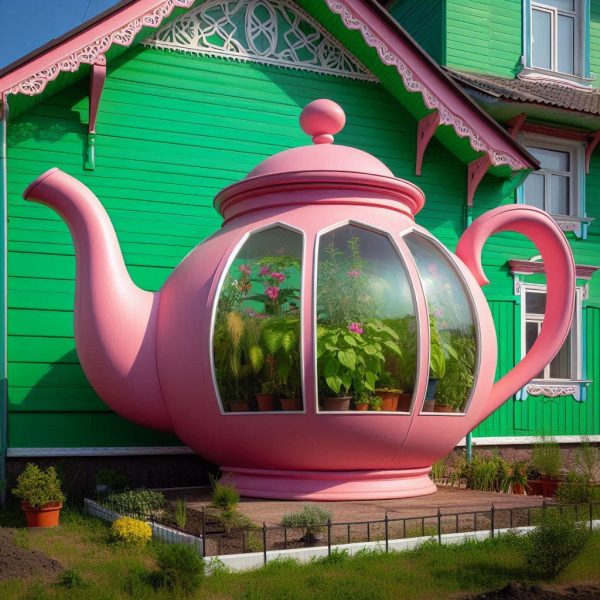
Accessorizing with Teapot-Shaped Greenhouses: Enhance Your Garden Décor
Enhancing Aesthetics
Accessorizing your teapot-shaped greenhouse can further enhance its visual appeal and functionality. Consider the following accessories:
- Themed Garden Tools: Choose garden tools with matching designs to complement the teapot theme.
- Decorative Elements: Add decorative elements such as fairy lights, garden statues, and wind chimes to enhance the charm.
- Outdoor Furniture: Create a seating area near the greenhouse with comfortable and stylish outdoor furniture.
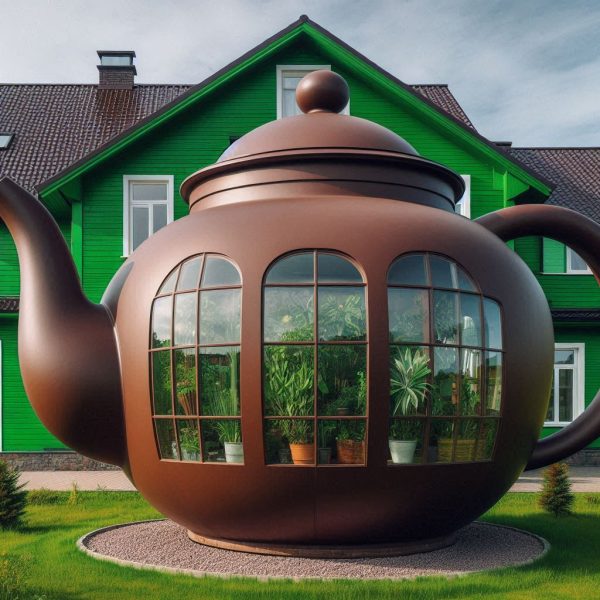
Practical Additions
- Storage Solutions: Incorporate storage solutions for gardening tools, pots, and supplies, ensuring they blend seamlessly with the design.
- Watering Systems: Install automated watering systems to ensure your plants receive consistent hydration.
- Shelving and Plant Stands: Use shelving and plant stands to maximize space and organize your plants efficiently.
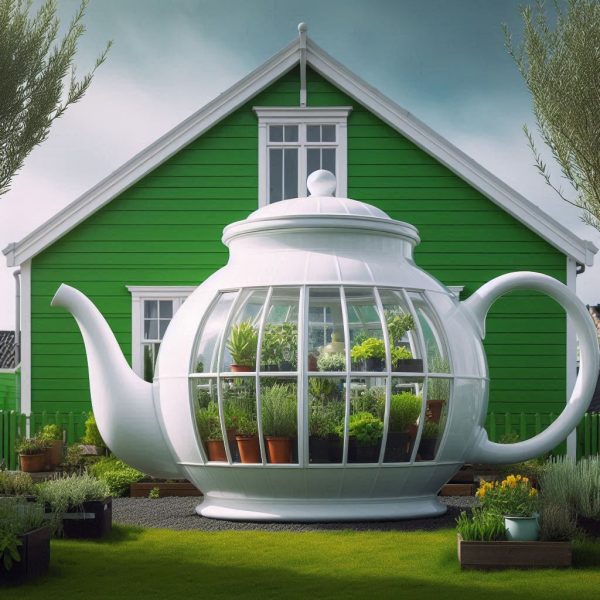
From Concept to Reality: The Evolution of Teapot-Shaped Greenhouses
Historical Perspective
Teapot-shaped greenhouses are a relatively recent innovation, inspired by the charm and whimsy of garden design. The concept merges the functionality of traditional greenhouses with the artistic appeal of whimsical shapes, creating unique and eye-catching garden structures.
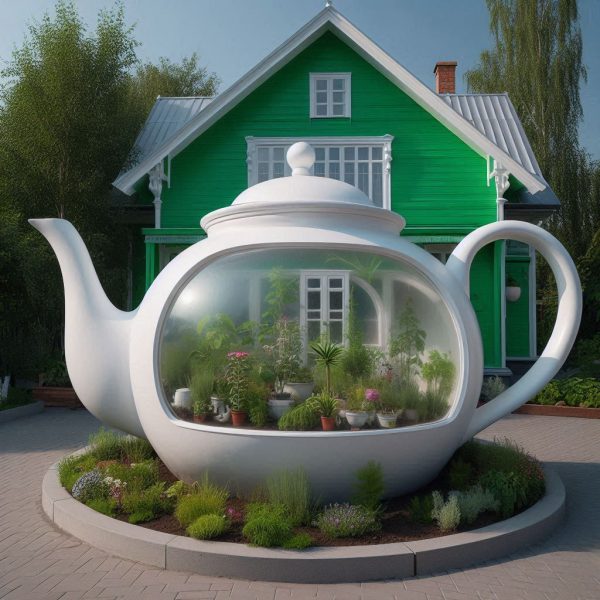
Early Designs
Early designs of teapot-shaped greenhouses were simple and focused more on aesthetic appeal than functionality. As the trend gained popularity, designs became more sophisticated, incorporating advanced features and materials.
Modern Innovations
Today’s teapot-shaped greenhouses boast a range of advanced features, from smart technology integration to customizable designs and eco-friendly materials. These innovations have made them more appealing and accessible to a wider audience.
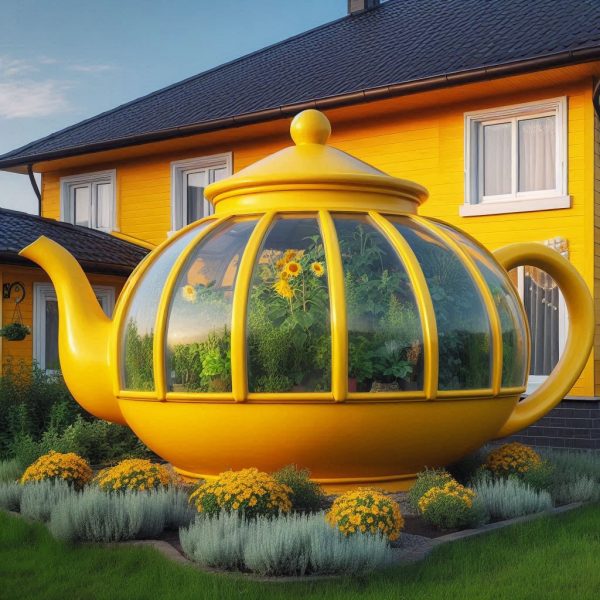
Finding the Perfect Teapot-Shaped Greenhouse: Matching Your Style and Needs
Personalized Selection
Choosing the perfect teapot-shaped greenhouse involves considering your personal style, space, and needs. Here’s how to find the right fit:
- Assess Your Style: Determine whether you prefer a classic, traditional design or a modern, whimsical look.
- Evaluate Space: Measure the available space in your garden to ensure the greenhouse fits comfortably without overcrowding the area.
- Consider Features: Evaluate the features that are most important to you, such as smart technology, eco-friendly materials, and custom designs.
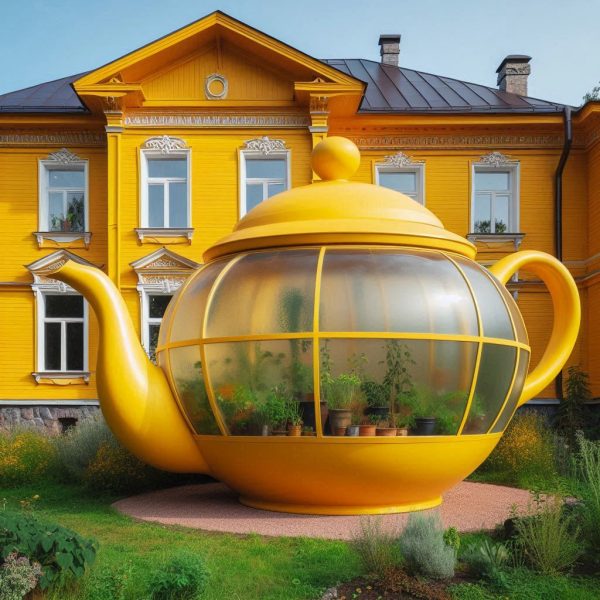
Exploring Different Materials for Teapot-Shaped Greenhouses: Which One is Right for You?
Material Options
Teapot-shaped greenhouses are available in various materials, each with its own benefits and considerations. Common materials include:
- Tempered Glass: Provides excellent clarity and durability but may require more maintenance.
- Polycarbonate Panels: Lightweight, durable, and offers good insulation, making it a popular choice for greenhouses.
- PVC: Affordable and easy to assemble but may not be as durable as other materials.
- Eco-Friendly Materials: For environmentally conscious buyers, materials like recycled glass and sustainable plastics are available. These materials are safer for both the environment and your garden.
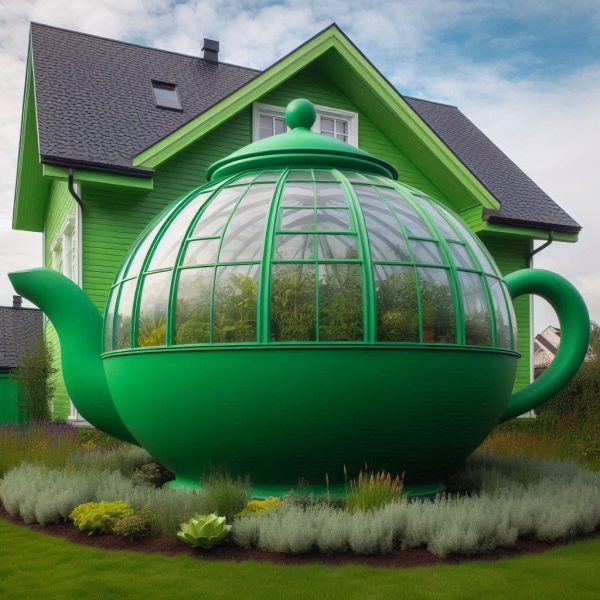
Pros and Cons of Each Material
- Tempered Glass
- Pros: Clear visibility, durable, aesthetic appeal
- Cons: Higher cost, requires more maintenance
- Polycarbonate Panels
- Pros: Lightweight, good insulation, durable
- Cons: Can be more expensive than PVC, less clear than glass
- PVC
- Pros: Affordable, easy to assemble
- Cons: Less durable, can degrade over time
- Eco-Friendly Materials
- Pros: Environmentally friendly, sustainable
- Cons: May be more expensive, availability can vary
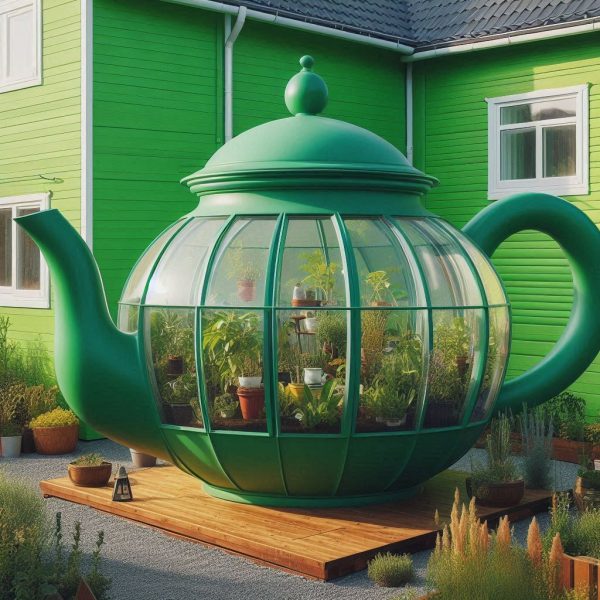
Maximizing Comfort and Convenience: Features to Look for in Teapot-Shaped Greenhouses
Key Features
When selecting a teapot-shaped greenhouse, look for features that enhance comfort and convenience:
- Ventilation Systems: Adjustable vents and fans to ensure proper airflow and temperature control.
- Insulation: Good insulation to maintain consistent temperatures and protect plants from extreme weather conditions.
- Automated Systems: Smart technology for automated watering, climate control, and lighting.
- Shelving and Storage: Ample shelving and storage solutions to organize plants and gardening tools efficiently.
- Durable Materials: High-quality materials that withstand weather conditions and wear and tear.
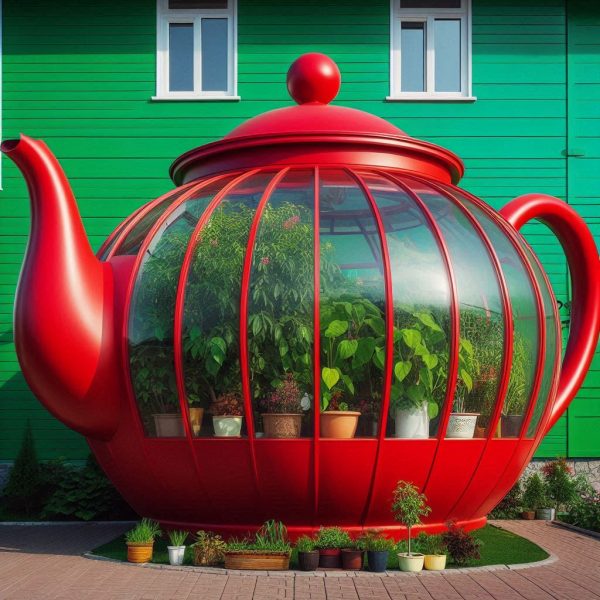
Additional Considerations
- Accessibility: Ensure the greenhouse is easily accessible for planting, watering, and maintenance.
- Lighting: Adequate natural and artificial lighting to support plant growth.
- Aesthetic Design: Choose a design that complements your garden and personal style.
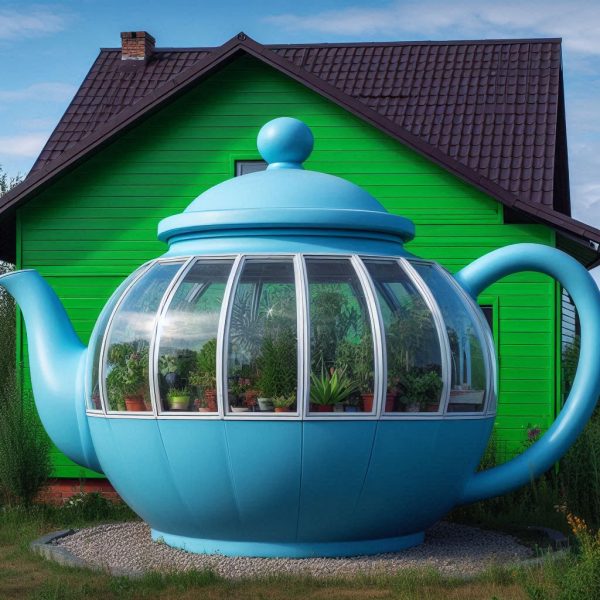
Sustainable and Eco-Friendly Teapot-Shaped Greenhouses: A Green Thumb’s Dream
Sustainable Practices
Incorporating sustainable practices into your teapot-shaped greenhouse can benefit both your garden and the environment:
- Recycled Materials: Opt for greenhouses made from recycled or sustainable materials.
- Energy-Efficient Features: Use energy-efficient lighting and climate control systems.
- Water Conservation: Implement rainwater harvesting and efficient irrigation systems to conserve water.
- Organic Gardening: Use organic soil and fertilizers to promote healthy, sustainable plant growth.
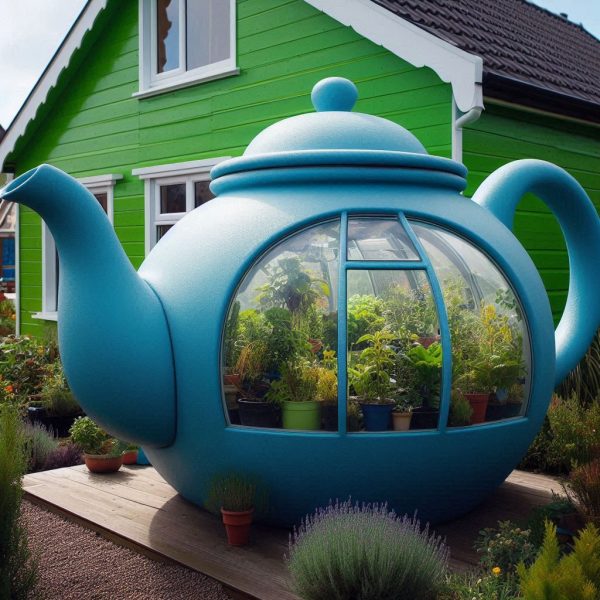
Benefits of Sustainable Greenhouses
- Reduced Environmental Impact: Lower your carbon footprint and contribute to environmental conservation.
- Cost Savings: Save on energy and water costs with efficient systems.
- Healthier Plants: Promote healthier, more resilient plants with organic and sustainable gardening practices.

Conclusion
Teapot-shaped greenhouses are a delightful addition to any garden, combining charm, functionality, and innovation. By understanding the key factors in choosing, maintaining, and accessorizing your greenhouse, you can create a beautiful and productive space that reflects your style and gardening needs. Embracing sustainable practices further enhances the benefits, making your teapot-shaped greenhouse a green thumb’s dream come true. Whether you’re a seasoned gardener or a beginner, this unique structure offers endless possibilities for creativity and growth.
